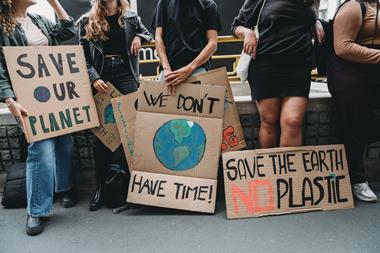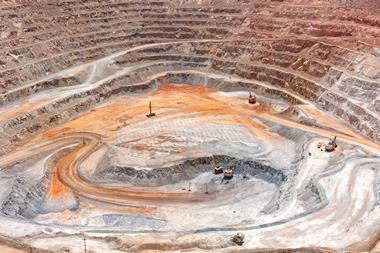Rapid population growth and geopolitical tensions are elevating resource scarcity to a completely new level

The acceleration of human population growth in the past century has raised the age-old risk of resource scarcity to an issue of global relevance.
Throughout history, humans have traded and fought over resources.
Fast-forward to the 21st century and resource scarcity remains a key risk in a globalised society. According to PwC’s report Minerals and Metals Scarcity in Manufacturing: the Ticking Time Bomb, such scarcity can be divided into three categories: physical, economic and geopolitical.
The risk of physical scarcity is fairly self-explanatory. Diminishing natural stocks pose a risk to firms along the entire supply chain. Arguably, the most alarming physical scarcity is that of water. Indeed, the World Economic Forum’s 2014 Global Risks report found business and world leaders placed water scarcity in the top three risks of global concern. Moreover, the UN estimates that by 2025, 1.8 billion people will live in areas plagued by water scarcity, with two-thirds of the world’s population living in water-stressed regions as a result of use, growth and climate change.
Economic scarcity of a resource can be a consequence of physical scarcity. Price volatility is a market reaction to high demand and low supplies, making a resource economically scarce. That said, economic scarcity is not necessarily a result of diminishing stocks; materials such as indium – a chemical element primarily used in thin-film technology – can become economically scarce as a result of a spike in demand, such as an increasing appetite for touchscreens.
Estimates from the UN Department of Economic and Social Affairs suggest that, from 2 billion in 1927, the world population had doubled by 1974 and will reach 8 billion by 2025. This quickening pace of growth is a major factor in the scarcity of resources.
As the number of people increases, humans will require more food and water, as well as materials to build homes, conurbations and appliances. To protect societies from the effects of physical and economic scarcity, one option for governments is to impose constraints on the extraction, exportation and pricing of resources.
Chinese dominance
In August, the World Trade Organisation (WTO) condemned China’s exportation cap on rare earth metals tungsten and molybdenum (both used in alloys) following a complaint by the US. The Americans had requested consultations with China regarding its policies on these metals in 2012, with the EU, Japan and Canada joining latterly to form a dispute settlement body (DSB) with China. Panel debates were held this spring and the DSB report was circulated thereafter.
In the report, the DSB concluded that “the overall effect of the foreign and domestic restrictions is to encourage domestic extraction and secure preferential use of those materials by Chinese manufacturers”.
In September, China stated that it would implement the DSB’s recommendations in a manner that respects its WTO obligations within a reasonable period of time.
China dominates the production and consumption of critical resources, accounting for 46% of global coal production and 49% of global consumption in 2012. The second-largest consumer that year, the US, accounted for 11% of coal consumption.
From a risk management perspective, the factors that contribute to a resource’s scarcity pose significant risks for manufacturers, suppliers, distributors and consumers.
Aaron Glashan, supply chain implementation consultant at asset and safety management consultancy Enterprise AMS Group, says that implementing a localised management team to support supply bases where critical materials are located can help to control some aspects of scarcity risk.
“The importance is then placed upon localised knowledge to understand the constraints on the commodity itself, other market trends and associated risks,” he says.
However, he adds that the principles of commodity management are not consistent across industry and that, within organisations, the value and perception of risk towards critical materials can often seem disjointed.
“If you talk to someone in procurement – an engineer, project manager, product manager or production manager – they will each place different importance on different elements of the risk or perceived risks,” he says. “There is definitely a need for a more holistic view within risk management to balance the interpretation of risk.”
Whenever risk is raised, organisations will probably be most concerned with physical scarcity. However, aside from the diminishing fossil fuel resources and water scarcity, most critical materials are unlikely to become obsolete.
Nevertheless, physical scarcity has a significant effect on market conditions, which can be manipulated by policymakers.
The growth of the world’s population is likely to exacerbate all three kinds of resource scarcity and therefore increase the risks for businesses along complex supply chains. Asa Gibson
Downloads
Raw facts
PDF




















No comments yet